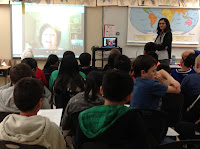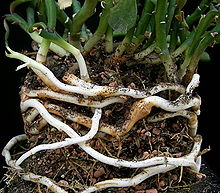Overflowing with abundance.
That is what this week has been.
Not just for myself as a chief learner but for my students as well. Between professional development for myself,
a whole lot of firsts in the classroom, to a magical Genius Hour in the
classroom; this has been a memorable week.
This week I was fortunate enough to listen to a Blackboard
Collaborate archived session on Literacies of Attention, Crap Detection,
Participation and Collaboration facilitated by Howard Rheingold and a live
session on The Challenges and Opportunities of Modern Learning facilitated by
Will Richardson (author of Why School?).
As well I listened to Chris Lehmann speak at Engaging the Digital
Learner Dinner Series put on my school district. This
is all on top of the normal amount of Twitter chatter that I listen to. That has been an awful lot of information to
assimilate and make sense of. So, this
is what I see from where I am.
In a time where “Google” has become a verb, technology has
redefined the role of the teacher. We
have moved beyond the teacher delivering content to facilitating learning. We have moved from a time of scarcity of
knowledge to one of abundance. Will Richardson convincingly argues that in
order for schools to survive, they need to change their role. Teachers are merely guides in the journey of
learning a student takes. We can show
them the tools for learning, and, as Howard Rheingold so eloquently states,
teach them “crap detection” so that they can evaluate the validity of what they
are learning. Besides the abundance of information, what other challenges do you think schools today face? How has your teaching changed because of it?
Chris Lehmann talked about how traditionally schools were
based on three institutions: the factory system, the prison system, and,
surprising to me, the church. Students
were taught the same content in the same way as a factory. They were not allowed to mingle and converse
in the hallways and moved from cell to cell (classroom to classroom) like in a
prison and they faced forward in rows and listened to an authority figure like
in a church. This made me reflect on how
I am learning currently by participating in ETMOOC. It is nothing like a factory, prison or
church. This is the style of education
that future schools will increasingly engage in: individualized, without walls, and inquiry
driven.
 Passion based learning seems to me to be the way to truly
teach. This week, during Genius Hour,
my students were so engaged and I felt so fulfilled as a teacher. It was truly magical what was happening in
the classroom. There was a wide variety
of talent. Students were researching, creating
animations, knitting, and drawing. There
were discussions and sharing of learning going on and when it was time to clean
up, there was a chorus of “awwww… but we just started.”
Passion based learning seems to me to be the way to truly
teach. This week, during Genius Hour,
my students were so engaged and I felt so fulfilled as a teacher. It was truly magical what was happening in
the classroom. There was a wide variety
of talent. Students were researching, creating
animations, knitting, and drawing. There
were discussions and sharing of learning going on and when it was time to clean
up, there was a chorus of “awwww… but we just started.”
 A week of abundance.
That has been my students’ experiences this week at school. It has been an exciting week. The Spirit Team at our school, which most of
my class is a part of and which I sponsor, created anti-bullying videos and was
invited to Simon Fraser University to participate in a celebration for those
standing up against bullying. Also, our
class’ letters to the editor, that where written to raise awareness about
rhinos being endangered, were published.
The most exciting thing of all was the first ever Skype call for my
class to Cape Town, South Africa to talk to Karen Stadler, the organizer of the
Save Our Rhinos movement. None of these
experiences would have been possible if it had not been for my PLN on
Twitter. I learned about the video
contest, Save Our Rhinos and Skype Education on Twitter. So thank you to my PLN and thank you to
technology. May the abundance continue!
A week of abundance.
That has been my students’ experiences this week at school. It has been an exciting week. The Spirit Team at our school, which most of
my class is a part of and which I sponsor, created anti-bullying videos and was
invited to Simon Fraser University to participate in a celebration for those
standing up against bullying. Also, our
class’ letters to the editor, that where written to raise awareness about
rhinos being endangered, were published.
The most exciting thing of all was the first ever Skype call for my
class to Cape Town, South Africa to talk to Karen Stadler, the organizer of the
Save Our Rhinos movement. None of these
experiences would have been possible if it had not been for my PLN on
Twitter. I learned about the video
contest, Save Our Rhinos and Skype Education on Twitter. So thank you to my PLN and thank you to
technology. May the abundance continue!







